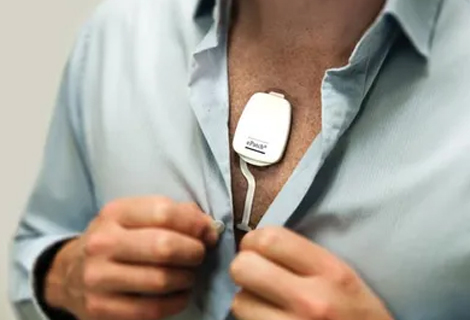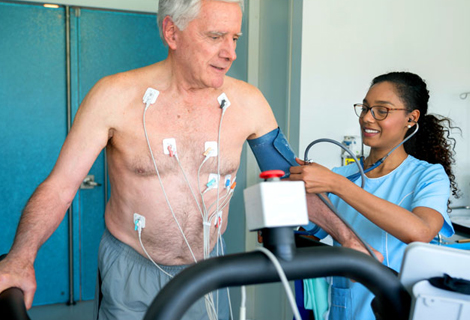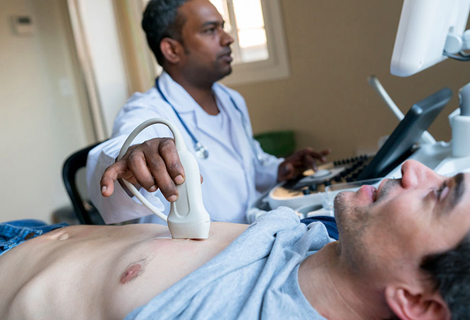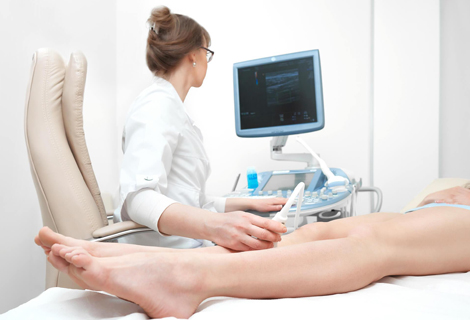Holter, Event & MCOT Monitor
What are Holter, Event & MCOT Monitors?
In the event of an unexplained stroke, heart palpitations, or atrial fibrillation, your physician will have your heart rhythm recorded using cardiac monitors. It will help them capture irregular heartbeats, identify the disorder and decide the proper treatment. Holter, Event, and MCOT are cardiac monitors used to gain specific information. The type of monitor suggested will vary on the duration they can be used and the information necessary.
Holter Monitor
A holter monitor is a wearable cardiac monitor similar to an electrocardiogram (ECG). It tracks your heartbeat for 1 or 2 days as advised by your physician. A holter monitor is engaged with your body using small patches (electrodes) that stick to the skin on the chest and abdomen. The heart's electrical activity is monitored and recorded through the patches by wires connecting to an ECG machine.
Why is Holter Monitor suggested?
The holter monitor is used if the physician does not get the necessary information after using a traditional ECG. Some other possible reasons to suggest the use of a holter monitor are:
-
To capture irregular heartbeat
-
Evaluate unexplained stroke, dizziness, shortness of breath, or tiredness
-
Assess the risk of possible heart disease
-
To see how well the pacemaker is working
What are the risks of a Holter Monitor?
Risks that come with the holter monitor are rare as it is a simple and painless method used to monitor the heart's functioning. There may be a slight skin discomfort where the electrodes are placed.
The holter monitor cannot get wet, so you should not swim or bathe while the monitor is on you. If you have a wireless monitor, you can disconnect and connect the sensors so that you can shower.
You should not come close to certain electrical appliances like microwave ovens, electric toothbrushes, razors, magnets, metal detectors, etc. It may affect the monitor's reading
What are the preparations needed for a Holter Monitor?
Some of the preparation tips for using the holter monitor include:
-
Avoid smoking during monitoring
-
It is good to bathe before the appointment as many monitors cannot be removed once it begins, and they cannot be wet
-
Your physician will give the instructions on how to wear it and continue with your day.
Event Monitor
An event monitor (also known as an event recorder) is a device that records your heart's electrical activity just like an electrocardiogram (ECG) but for a longer duration. You can wear the monitor for up to 30 days, but it does not record continuously.
You have to activate the recording when you have a symptom. Some devices start recording automatically when an abnormal heart rhythm is detected. The monitor includes sensors called electrodes that will be attached to your skin on the chest.
There are two main types of event monitors:
-
Symptom Event Monitor: You activate the monitor when there is a symptom. It will record the heart's electrical signal for a few minutes.
-
Memory Looping Monitor: Once you activate the monitor, it will record the information a few minutes before the activation, during the symptom, and a few minutes after.
Why is an Event Monitor used?
Even if your ECG looks normal, there can be an underlying cause for the abnormal heartbeats, which can come and go from time to time. Hence, an event monitor will help the physician pick the abnormal heart rhythm when experiencing a symptom. Other benefits of using an event monitor are:
-
To check if the pacemaker or medicines are working properly
-
Assess the symptoms like dizziness, chest, and palpitations
-
To check if your heart is beating fast or skipping beats
-
Monitor the heart after a heart attack
What are the risks of an Event Monitor?
There are no risks or pain caused while wearing an event monitor. There can be slight temporary discomfort while wearing the patch. Other factors to keep in mind include:
-
Follow any exercise related instructions, as sweating can cause the patches to come off.
-
Avoid electrical devices like electronic toothbrushes or razors, microwave ovens, cellphones, metal detectors, etc. It may hinder the monitor's reading.
What are the preparations necessary for an Event Monitor?
Some of the preparation tips that you must keep in mind are:
-
Your skin must be free of oil, cream or sweat before putting the patches
-
Inform your physician if you are allergic to any adhesive
-
Keep a diary while wearing the monitor to note down on how you feel and any symptoms you may have
-
Learn how to transfer the information of the reading over the telephone
MCOT Monitors
Mobile Cardiac Telemetry (MCT or MCOT) is an advanced cardiac monitoring device that automatically monitors, records, and transmits the abnormal heart rhythm for 24 hours up to 30 days. It picks up the heart's electrical signals just as an ECG throughout the day and night, even when the patient is asleep.
The MCOT monitor does not need any patient involvement as the device automatically detects and transmits the heart rhythms to a remote monitoring site. It gives more efficient care as the transmitted information is assessed by a physician who looks for abnormal rhythms as they occur.
What is the need for MCOT Monitor?
MCOT is an advanced cardiac care device that efficiently detects cardiac arrhythmias and diagnoses symptoms. It improves the quality of service provided. Physicians will suggest an MCOT monitor by carefully assessing specific indications such as:
-
Unchecked arrhythmias or palpitations
-
Symptoms like chest pain, dizziness, shortness of breath
-
Monitor non-life-threatening arrhythmias
-
A patient recovering from cardiac surgery
-
Evaluating the effectiveness of medicines
What are the risks involved with MCOT Monitor?
It is advised not to use an MCOT monitor on a patient with life-threatening abnormal heart rhythms. They must be under in-patient monitoring. Avoid proximity with certain electronic devices while reducing the risk of altered results. Your physician will provide further instructions.
What are the preparations necessary for MCOT Monitor?
The accuracy of the MCOT monitor depends on how the area of placement is prepared, placement of electrodes and leads (connection of electrodes to the telemetry unit), equipment maintenance, and proper education of the device. Some points that you must abide by are:
-
Clean the skin with soap, water, and then alcohol swap before placing the monitor
-
Maintain the battery status on the device
-
Daily assessment of the skill is important



